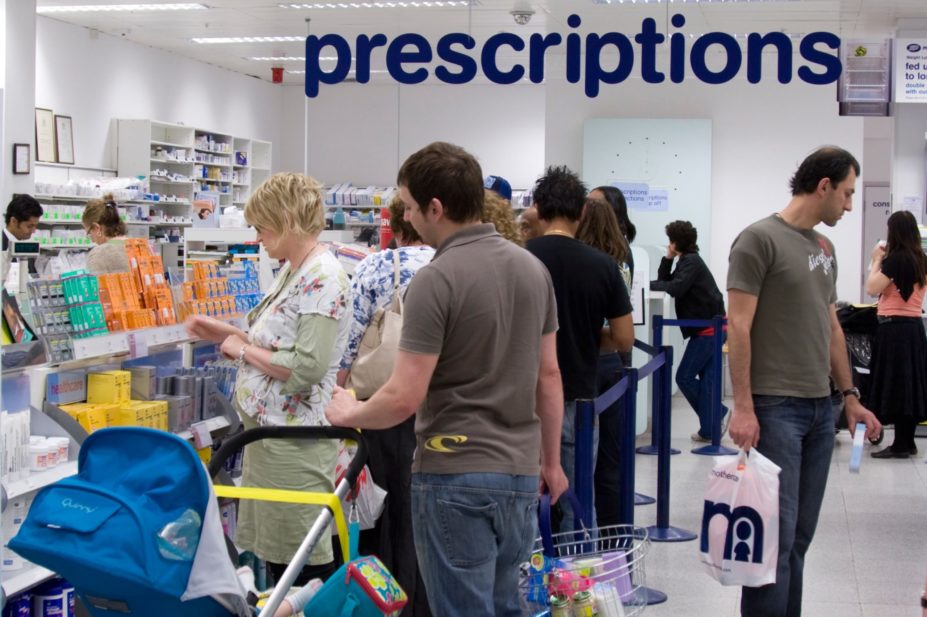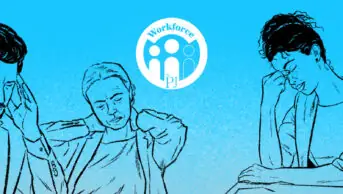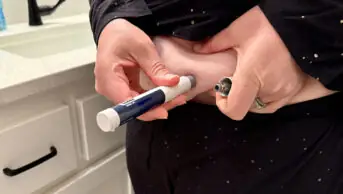
Alamy Stock Photo
More than three-quarters of respondents to The Pharmaceutical Journal’s 2021 salary and job satisfaction survey said that a “lack of staff” was creating a barrier to doing their job effectively.
When asked “What do you believe are the barriers to you doing your job properly?” and invited to select all options that applied, 77.8% of 991 respondents identified lack of staff as an issue — up from 48.6% in the 2020 survey.
In certain sectors, this figure was even higher. More than nine out of ten (91.6%) of the 274 hospital pharmacists who responded highlighted lack of staff as an issue in 2021, compared with 58.7% the previous year. In the community pharmacy sector, 87.2% of 347 respondents agreed, up from 59.9% in 2020.
Of the 45 GP practice pharmacists who responded to the question, 51.8% felt that a lack of staff was a barrier to doing their job. Of the 16 primary care network (PCN) staff who responded, 38.1% agreed.
In the 2020 survey, the GP practice and PCN settings were combined, with 20.4% of the respondents in this category believing staff shortages were hindering their job performance.
Academia was the sector with the highest level of agreement that lack of staff was an issue, at 95%: up from 38.9% in 2020. However, the number of respondents was low, with only 19 people answering this question.
Pharmacists were added to the Home Office’s shortage occupation list in March 2021, after the department’s Migration Advisory Committee said there was evidence of “a national shortage in this occupation due to a decline in the number of pharmacy graduates and increasing demand for their services”.
Leyla Hannbeck, chief executive of the Association of Independent Multiple Pharmacies, said the lack of staff in community pharmacy was mainly down to “the stripping of experienced community pharmacists, with many years’ experience of managing both staff and patients in local communities,” from the sector.
“These skills are now lost into PCNs in an unplanned and uncoordinated manner,” she said, adding that pharmacy technicians were also “going to PCNs or hospitals”.
Hannbeck also said that many community pharmacies have been led “to replace those experienced pharmacists that have gone to PCNs with less experienced pharmacists and locums who are having to learn new skills”.
She added that replacing community pharmacy staff was “increasingly difficult due to the well reported general labour pool shortage and social and greater work/life balance expectations of all staff post-COVID”.
“We have been in discussions with the NHS England team for months about this issue, raising concerns about the impact this unplanned drive of our workforce to PCN is having on community pharmacy,” she said.
Claire Anderson, president of the Royal Pharmaceutical Society (RPS), said that “given the challenges facing the pharmacy profession over the past year, it is not entirely surprising that staffing deficits have been highlighted as a significant concern by this survey”.
“The RPS Mental Health and Wellbeing survey highlighted an increasing risk of burnout across the profession, and the correlation between the stresses on the profession and the challenges of recruitment and staff are very clear.
“What is now needed is greater investment in pharmacy services and the staff needed to deliver high quality pharmaceutical care,” she said.
“It is also critical that there is meaningful and robust pharmacy workforce planning in place, which takes into account all sectors, skill mix requirements, and workforce changes resulting from new services and digital improvements.”
Paul Day, director of the Pharmacists’ Defence Association (PDA) and the PDA Union, said that the survey findings “do not come as a surprise to the PDA” who, he said, “continuously hear concerns from the frontline of practice”.
Day added that “the combined GPhC [General Pharmaceutical Council] register of pharmacists (provisional, temporary and full) is at a record total number and there does not seem to be a shortage of pharmacists”.
“But there are places where there are shortages of pharmacist hours, because many of the profession would now rather undertake other roles, increasingly outside of pharmacy practice, for all or part of their week, rather than work in the conditions being offered within pharmacy,” he said.
Council papers published by the GPhC in February 2021 projected a 7% increase in pharmacist numbers in 2021/2022, following a “very low level of growth in 2020”. However, the papers said it was “very unlikely that this level of growth will remain”, and that projections for 2022/2023 and 2023/2024 are 1.3% and 1.4%, respectively.
In the same papers, pharmacy technician numbers were projected to rise by 2.7% in 2021/2022. Levels of registered pharmacy technicians have “grown steadily over the past few years”, with the papers giving projected increases of 1.0% per year for both 2022/2023 and 2023/2024.
Read more: Pharmacy staff recruitment into general practice should be paused, say negotiators


